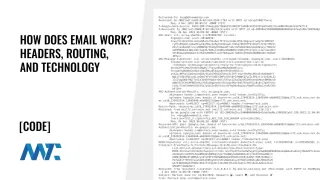App: Check Your Sending IP Address To See If You’re Blacklisted For Email On Major DNSBL Servers

1bers’ inboxes, there’s a chance that the IP address you’re sending from has been blacklisted. You can enter the IP address, the domain, or the subdomain you’re sending your email from, and this form will resolve it.
What’s A DNSBL Server?
DNSBL stands for Domain Name System (DNS) based Blackhole List. It is a method used to identify and block email messages sent from IP addresses associated with spam, malware, and other forms of unwanted or malicious activity.
Email servers use DNSBLs to check the IP address of incoming email messages against a database of known spam sources. If the IP address is found on a DNSBL, the email message is blocked or flagged as spam.
A DNSBL is essentially a database of IP addresses that are known to be associated with spam and other unwanted activity. When an email message is received, the email server checks the sender’s IP address against the DNSBL. If the IP address is listed, the message is blocked or flagged as spam.
This helps reduce the amount of spam received by users and keeps email inboxes free of unwanted messages.
How Do IP Addresses Get Blacklisted for Email?
IP addresses can get blacklisted with DNSBL servers for a variety of reasons, but most commonly, it is due to sending spam, hosting malware, or phishing sites.
Some DNSBLs also list IP addresses that have been compromised by hackers and are being used to send spam without the knowledge of the legitimate owner.
Additionally, some DNSBLs may list IP addresses that have been assigned to a dynamic IP address pool and have been previously used by a spammer or other malicious actor. This is known as a poor reputation IP address.
How Do You Get Your IP Address Delisted From A DNSBL?
If an IP address is listed on a DNSBL, it means that the IP has been identified as a source of spam or other malicious activity. If an IP address is listed on a DNSBL, the first step is to identify the source of the problem. This could be due to an infected computer on the network, a compromised email account, or an open relay on a mail server. Once the source of the problem is identified, it should be addressed and cleaned up. Once the issue has been resolved, the IP address can be delisted by requesting a delisting from the DNSBL or by contacting the system administrator of the DNSBL. It is also recommended to monitor the IP address to ensure it does not get listed again.
Do you have a DNSBL server you’d like me to add to this list? Let me know!
And, if you’re having difficulty with monitoring and repairing your sending reputation, feel free to reach out to my firm, DK New Media. We are deliverability experts and can assist you.







